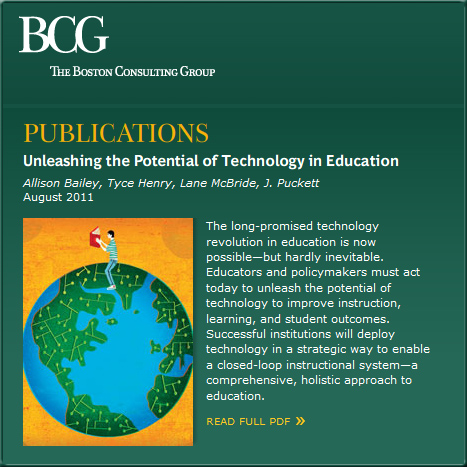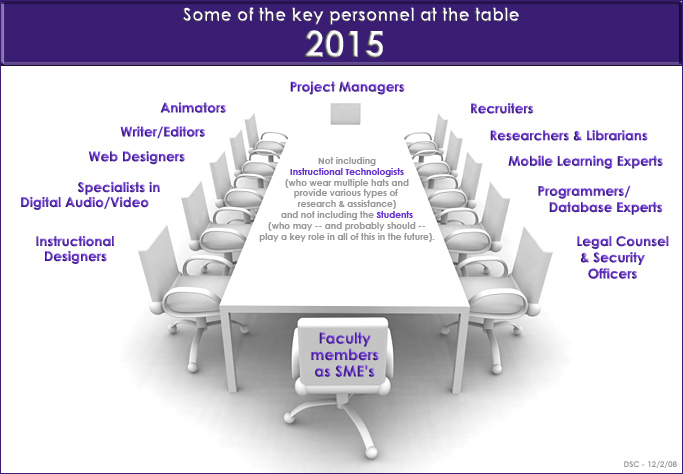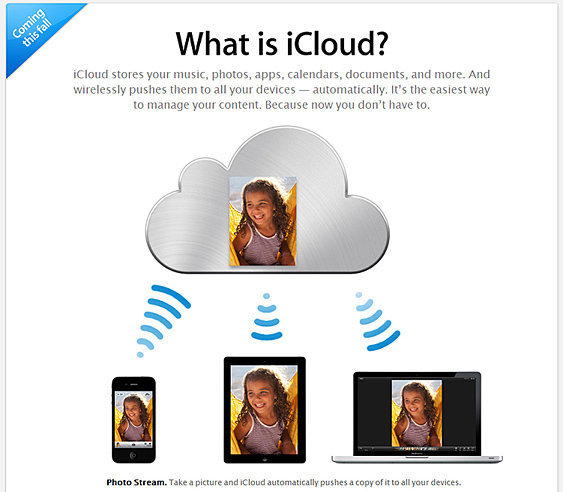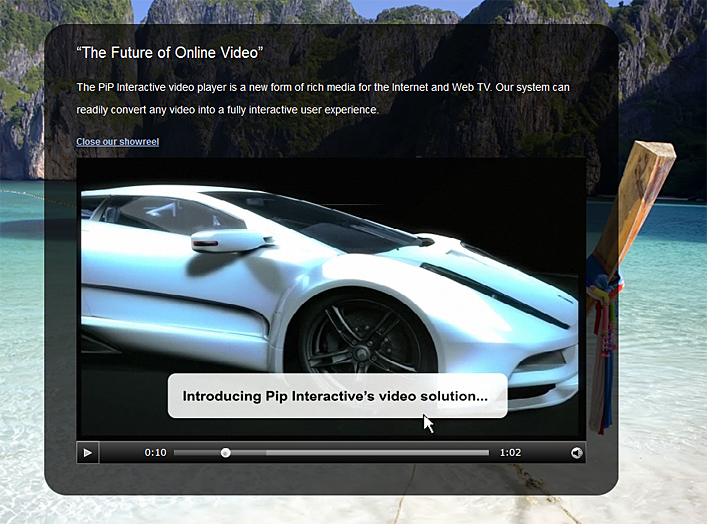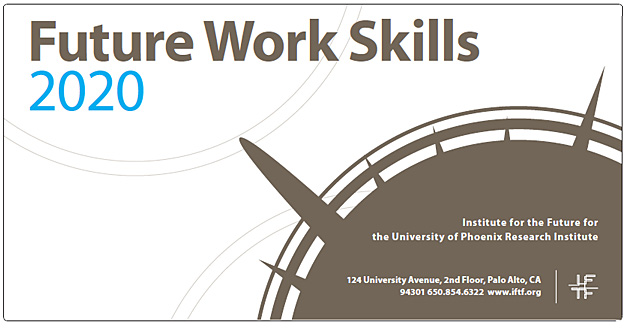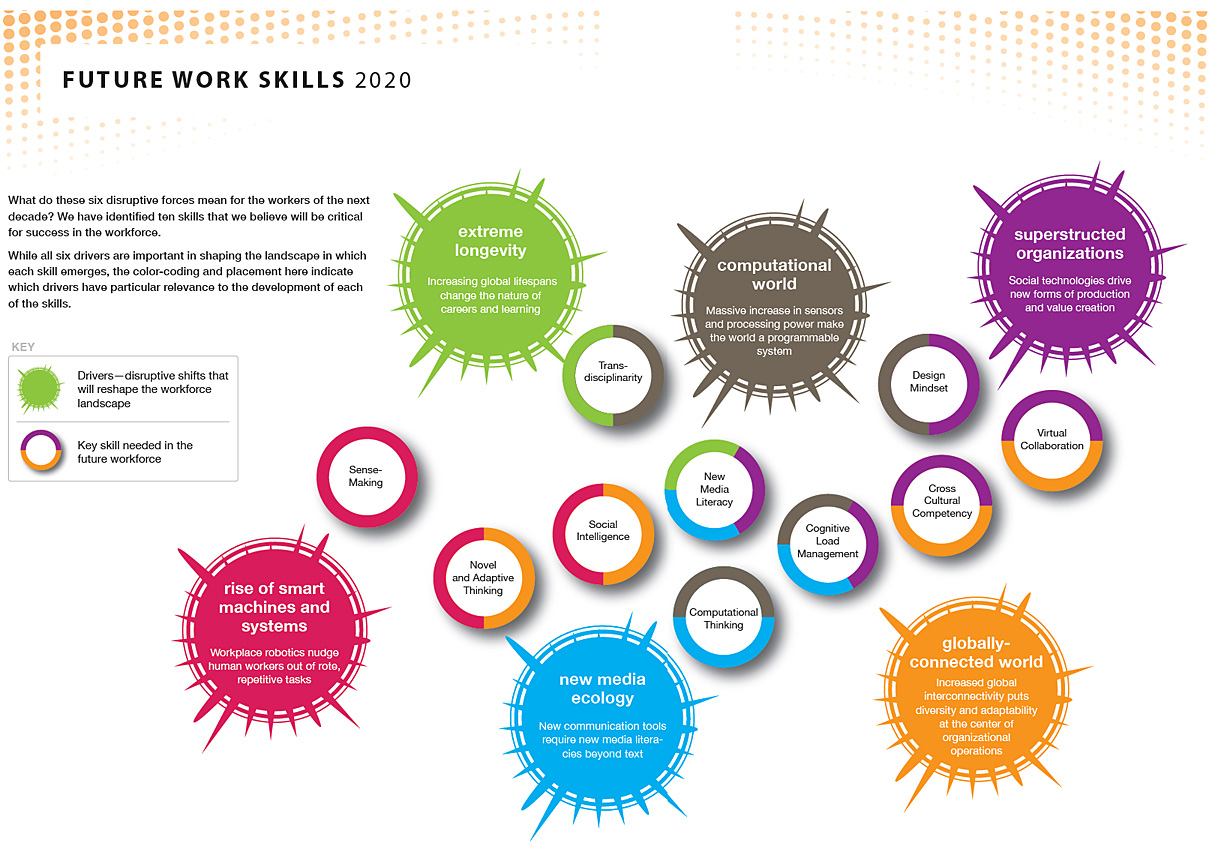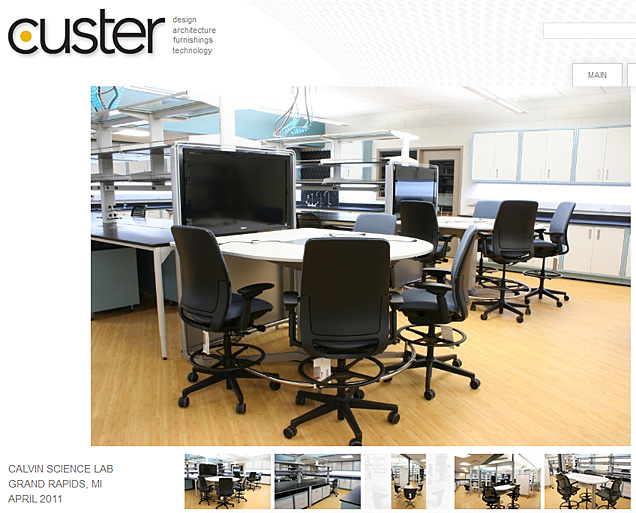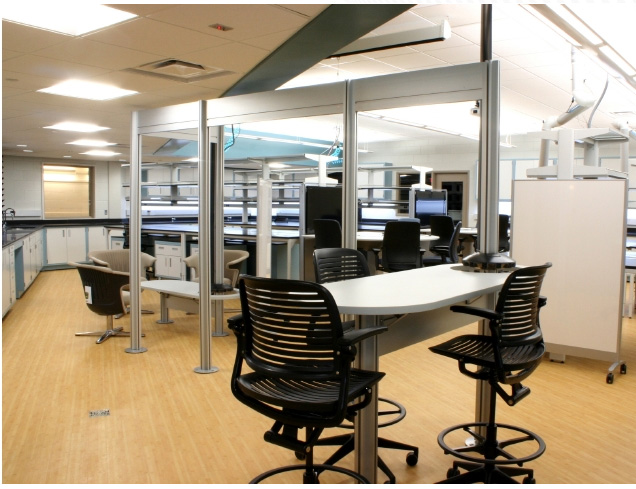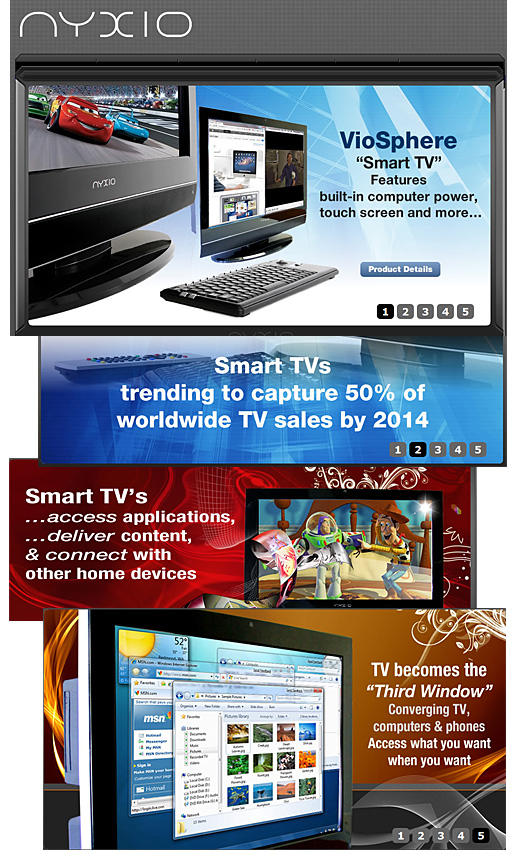Stanford researchers designed software that allows a viewer to zoom and pan while streaming online courses. They recently released the code to the public.
How the BBC is quietly, confidently shaping the future of TV –– from FastCompany.com by Kit Eaton
[On Monday] morning the BBC launched a whole new version of its iPlayer app, destined for connected TVs that sport a Net connection. In essence this means the BBC has taken its TV content online, added on-demand features, advanced search powers, playability on multiple platforms both mobile and static, and then fed all of its lessons back into an app…for TVs.
10 Transformative Technology Trends for 2011-2012 [ ]
Excerpt:
The momentum has been building for several exciting emerging technology trends. While television content is increasingly available and delivered over the web, living room devices are becoming more inter-connected to create a more coherent user experience. GIA identifies and summarizes 10 key developments that drive market-shifting changes throughout the technology, media and telecommunications ecosystems.
Apple moves closer to taking over your living room — from readwriteweb.com by John Paul Titlow
Apple TV update adds iCloud storage for TV shows — from thisismynext.com by Nilay Patel
Apple announces a full assault on the cable box w/ the streaming of purchased TV shows — techcrunch.com
Apple Launches iCloud Beta [PICS] –– from Mashable.com by Ben Parr
Also relevant along these lines (but not from Apple):
Also see:
Smashing the cubicles — from technologyreview.com by Tom Simonite
By sketching future spaces around tablets, smart phones, and social technologies, companies can operate with far fewer desks.

Designed for mobility:
This conference table, from the design firm Steelcase, allows employees to dock their mobile devices and take turns sharing the displays at the ends of the table. Credit: Steelcase
Also see:
- The Rise of the Virtual Office — from technologyreview.com
As the definition of the workplace changes, dramatic increases in productivity could be ahead.
Custer helped Calvin College outfit a new science lab;
above picture features one of the possible implementations of Steelcase’s Media:Scape product
Reengineering IT in higher education — from campustechnology.com by John Waters
Excerpt:
Higher ed IT is going the way of the TV repairman, eventually becoming anachronistic maintainers of commodity systems–if university and college technology managers and chief information officers don’t reclaim their rightful place as innovators. So proclaimed William G. “Gerry” McCartney, CIO at Purdue University, who spoke to attendees at the annual Campus Technology 2011 conference last week in Boston. McCarthy said he wants to see nothing less than a new kind of higher ed hybrid, one that transforms colleges and universities into “producers as well as consumers.”
From DSC:
I have had the perspective for decades now that those organizations who utilize technologies the best will be the winners (sorry for the competitive way of framing this topic, but it’s true).
“Keeping the systems running” in the world of IT is important — but the strategic use of IT has arguably become more important as the Internet, changing landscapes, and budgetary pressures continue to disrupt higher education.
In the 21st century, if you want a successful organization, you must have at least one visionary technologist — who understands your business — on your organization’s decision-making board; if not, good luck to such an organization in the future. If your organization minimizes and underestimates the power of technology to disrupt your business, things may not turn out too good for your organization in the future.
Also see:
- Technology not a priority for most college administrators, report finds — from ConvergeMag.com by Tanya Roscorla
Digital Living Network Alliance certifies more than 1,000 television models in first quarter of 2011
Digital Living Network Alliance certifies more than 1,000 television models in first quarter of 2011
Rapid acceleration in certifications demonstrates continued importance of television as centerpiece in digital home
Excerpt:
PORTLAND, OR – July 19, 2011 – The Digital Living Network Alliance (DLNA) experienced unprecedented growth in the number of DLNA Certified® televisions during the first quarter of 2011, certifying more than 1,000 models in North America, Europe, Korea and Japan. The number of television models Certified by the Alliance in the first three months of the year was greater than the total number Certified in the first four years of the program. There are now more than 4,000 Certified television models available, providing consumers with a convenient way to connect and enjoy content throughout the digital home.
Total shipments of connected televisions in 2015 are expected to reach 138 million worldwide, according to DisplaySearch, a global market research and consulting firm specializing in the flat panel display supply chain and display-related industries. As the number of connected televisions grows on a global scale, and the television remains the hub of today’s digital home, DLNA is making the sharing of content across consumers’ home networks easier via standards-based products.
Kevin Slavin: How algorithms shape our world [TED]
Description:
Kevin Slavin argues that we’re living in a world designed for — and increasingly controlled by — algorithms. In this riveting talk from TEDGlobal, he shows how these complex computer programs determine: espionage tactics, stock prices, movie scripts, and architecture. And he warns that we are writing code we can’t understand, with implications we can’t control.
Relevant to mathematics; shaping our world; ethics; media; culture; society;
computer science; technologies; stock markets/business; architecture.










